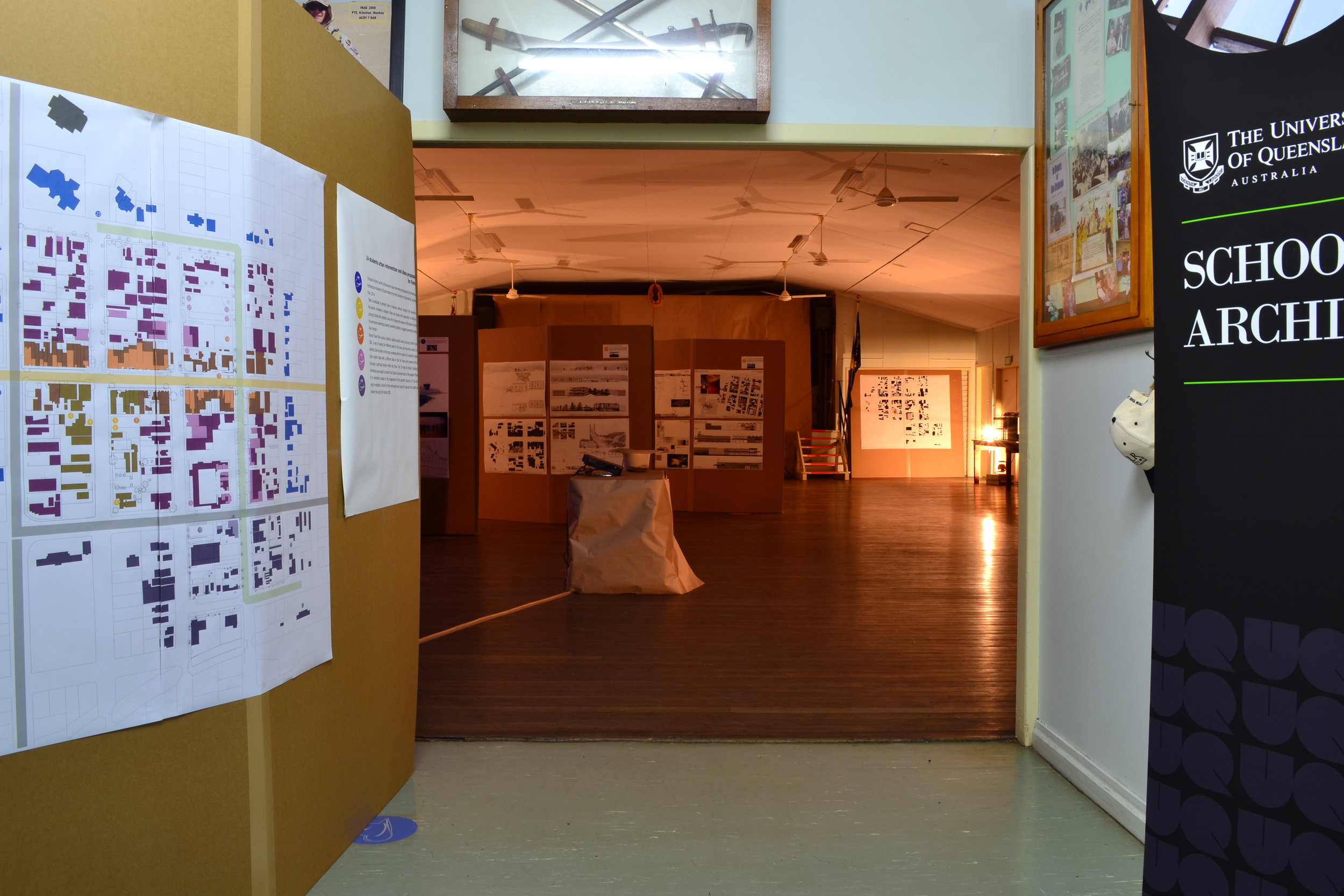24 Hats for Roma
2014
There is an apparent dearth of research / exemplar projects / architectural activity and general discourse between architects and our regional centres, in particular, towns located inland away from the Coastal fringe. Undoubtedly, this stems from the fact that the vast majority of practicing Architects in Queensland are located in the South-East Corner and simply through our physical absence these rural centres have fallen from our collective architectural consciousness.
Regional centres have a tendency to be the recipients of ‘silver-bullet’ projects, often state or federally funded money directed towards a ‘tourist destination’ which ‘puts them on the map’. But what of the urban fabric of our rural towns? What are the conditions of our regional town centres? What opportunities are present? How can contemporary architecture nurture local sensibilities and existing sense of place, or redress the inadequacies of past planning or built form? It is this essential brief which we wish to direct the Studio to explore and respond to in the course of this semester.
The Studio has nominated the town and community of Roma as a focus of study. Primarily because it lies out west and occupies Queensland’s vast interior and is not located along the Coast. Its remote locale is intended to evoke a more resourceful, rigorous, response from students. Roma is strategically sited at the crossroads of the Warrego Highway and the Carnavon Highway (Great Inland Way) and is described as the ‘capital of the west’. Originally the traditional home of the Mandandanji people. Situated on the edge of the coal seam gas fields and is presently enjoying an influx of people and activity. Perhaps most interestingly, Roma is built on the same scaled urban grid as Brisbane’s CBD. Surveyed over 150 years ago as the first town in the newly formed State of Queensland, presumably the dimension of the grid indicated at the time its potential equivalent capacity for scale, density, diversity and significance. The equality of the underlying urban grid offers comparative analysis and reference.
This Studio was set up for Students to research and visit Roma, then propose both urban propositions and architectural interventions which respond to Roma’s current condition or anticipate ‘possible futures’ with the intension of presenting something real and tangible back to the community upon its conclusion.
With support from the Maranoa Regional Council + Roma RSL + University of Queensland.
Photography: Phorm









